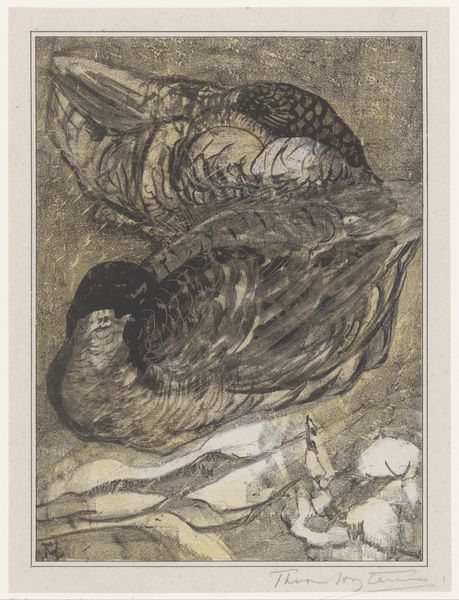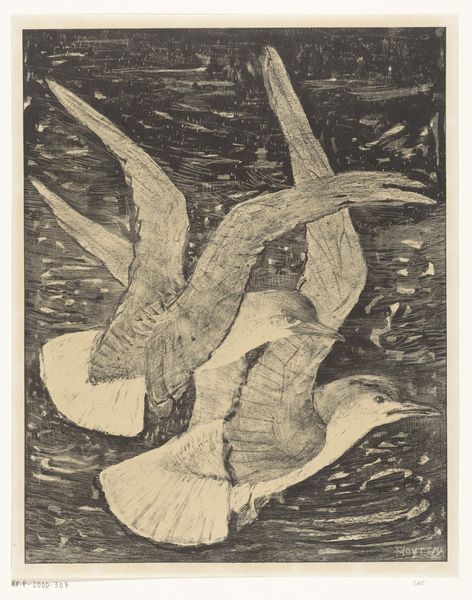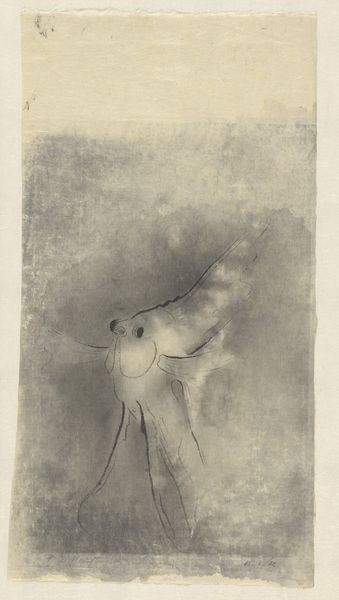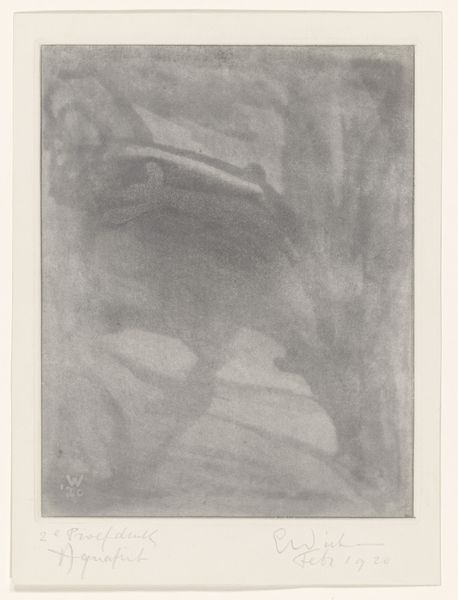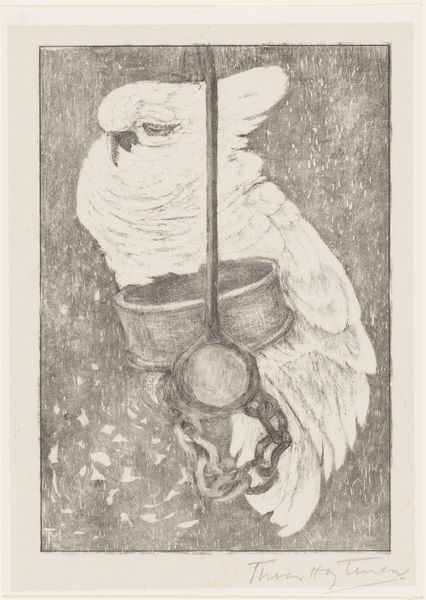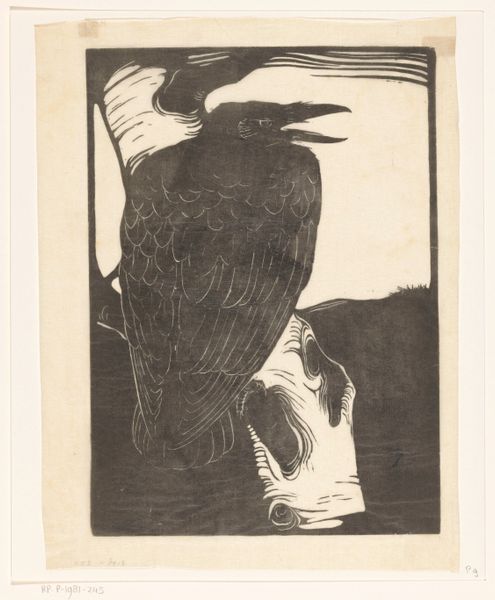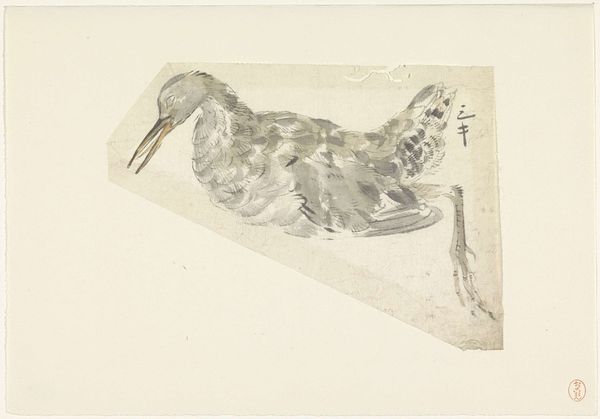
drawing, print, etching, paper, ink
#
drawing
#
toned paper
# print
#
etching
#
landscape
#
paper
#
ink
Dimensions: height 221 mm, width 168 mm, height 425 mm, width 300 mm
Copyright: Rijks Museum: Open Domain
This is ‘Floating Duck’ by Theo van Hoytema, made with lithography, a printing process using a flat stone or metal plate. The magic of lithography lies in its seemingly simple principle: oil and water don't mix. The artist would have drawn the duck onto the prepared surface with a greasy crayon or ink. Then, after treating the stone, only the drawn areas would accept the oil-based ink, allowing the image to be transferred onto paper. Look closely, and you can see the textures created by the lithographic crayon. The subtle gradations of tone, creating the soft plumage of the duck, and the reflections in the water, all rely on the artist's skillful manipulation of this technique. Hoytema elevates an everyday scene to art through the skilled use of this printing method, reminding us that beauty can be found in the commonplace, and that craft and fine art are not so different after all.
Comments
No comments
Be the first to comment and join the conversation on the ultimate creative platform.
